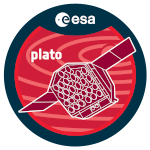Ultra-precise photometric data gathered by recent space missions improve our knowledge of stars significantly but we are also facing challenges to find models that fit the observations with the state-of-the-art theory. In addition, the huge amount of data requires the application of innovative data analysis techniques to exploit the information.
Machine learning could help us both to deal with the large amount of data and to explore new ways of processing the lightcurves of pulsating stars. Of special interest for studies of intermediate mass pulsating stars is the decades-old unsolved non-linear phenomenon. The aim of this project is to use machine learning tools in order to characterize a sample of pulsating stars through clustering analysis to shed some light into the nature of this phenomenon.
Specifically, we focus on the classification of delta scuti stars as High Amplitude (HADS) and Low Amplitude (LADS) through the analysis of nonlinear parameters characterizing the lightcurves (e.g. harmonics and combinations). Subsequently, the same study is extended to hybrid stars, which have g and p-mode pulsation and gamma Dor stars that only pulsate in g modes. The input parameters are extracted from the lightcurves of a sample of stars observed by TESS space satellite. The application of ML techniques for understanding nonlinearities have a great potential use for the Complementary Science Program of PLATO.

 PDF version
PDF version
